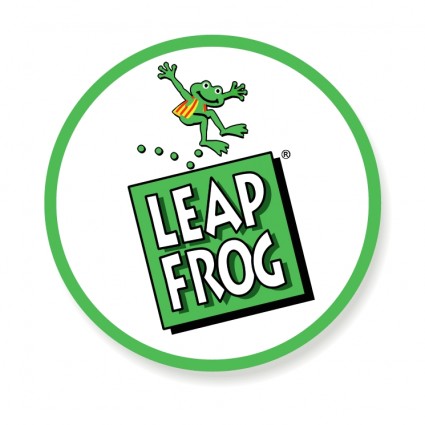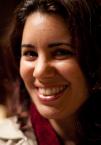Transitions Research was founded in 2013 by Diane Elabidi, a Human Factors Designer whose passion is to improve people’s quality of life through good design. She has dedicated the last 16 years to understanding user behavior and feeding her findings into product and user-experience design.
 Diane kicked-off her career in the Bay Area by joining IDEO’s Human Factors team, where she learned and practiced many of the research strategies she still leverages today. Based in their Palo Alto medical practice, she contributed her talents to a wide range of projects in the areas of medical equipment (non-invasive blood glucose monitoring system, pulse oxymetry device, breast cancer detection through ductal lavage) as well as to consumer products (fuel cell, soft keyboard, hearing devices), communication systems (Delphi-automotive, Logitech video), environmental design (Steelcase, Whirlpool) and experience design (Procter & Gamble, McDonald’s).
Diane kicked-off her career in the Bay Area by joining IDEO’s Human Factors team, where she learned and practiced many of the research strategies she still leverages today. Based in their Palo Alto medical practice, she contributed her talents to a wide range of projects in the areas of medical equipment (non-invasive blood glucose monitoring system, pulse oxymetry device, breast cancer detection through ductal lavage) as well as to consumer products (fuel cell, soft keyboard, hearing devices), communication systems (Delphi-automotive, Logitech video), environmental design (Steelcase, Whirlpool) and experience design (Procter & Gamble, McDonald’s).
 She then drove the human factors program at LeapFrog, where she founded usability labs that were referred to as the benchmark in the field for their high-end setup and their safety standards with children. She successfully created a user-centered community in the Bay Area among parents, teachers, school districts and educational organizations. This network gave designers access to a body of educational experts while offering the ideal test platforms to evaluate children’s learning patterns in their own natural setting.
She then drove the human factors program at LeapFrog, where she founded usability labs that were referred to as the benchmark in the field for their high-end setup and their safety standards with children. She successfully created a user-centered community in the Bay Area among parents, teachers, school districts and educational organizations. This network gave designers access to a body of educational experts while offering the ideal test platforms to evaluate children’s learning patterns in their own natural setting.
 Most recently, while nested in the the Industrial Design group at Plantronics, Diane managed the Human Factors program single-handedly for over 6 years. During that time, she advocated a user-centered approach across the organization and worked closely with all the departments involved in product development. Her role as the sole Human Factors resource for the company was 3-fold: she introduced the company to ethnographic research in the early stages of the design process, secondly she performed human factors evaluation and gave design recommendations for all headsets and other communication devices in the Consumer portfolios, and finally she raised and held up the user-interface flag setting up a common design language and documentation that was adopted across the company.
Most recently, while nested in the the Industrial Design group at Plantronics, Diane managed the Human Factors program single-handedly for over 6 years. During that time, she advocated a user-centered approach across the organization and worked closely with all the departments involved in product development. Her role as the sole Human Factors resource for the company was 3-fold: she introduced the company to ethnographic research in the early stages of the design process, secondly she performed human factors evaluation and gave design recommendations for all headsets and other communication devices in the Consumer portfolios, and finally she raised and held up the user-interface flag setting up a common design language and documentation that was adopted across the company.
Since research is an important part of Diane’s background she likes to keep a foot in the World of academics. She has been a guest speaker in Bill Moggridge’s Ergonomics class at Stanford’s Product Design School and in the last few years has been a lecturer at UCSC’s Jack Baskin School of (Computer) Engineering in the class of Human Computer Interaction (HCI) as well as the post-grad. course on User-evaluation of Technology.
Prior to Silicon Valley
Diane holds a B.A. in Industrial Design and a Masters in Human Factors from Polytechnic School. Her thesis, entitled: “The Role of Ergonomics in the Design Process” was developed in collaboration with a medical company and a Health & Safety Association focused on health institutions. She illustrated her theories through the design process of a medical patient-lift and was awarded the Julien M. Christensen prize by the Association for Canadian Ergonomics (ACE).
Upon graduating from her Master’s in 1995, Diane was immediately recruited by Cinbiose, one of the World Health Organization‘s research centers to work on long-term studies in the healthcare sector. Her areas of interest revolved not only around safety and health issues such as improving work environments/ devices for hospital employees, but also around more intangible topics such as the impact of work organization on emotional stress among the nurse workforce. At the time, studies on the emotional aspects of user-experience were at the vanguard of research.
 From 1994 to 1998, Diane was sole proprietor of Dea Design where she explored the freedom and challenges of a being a consultant. In a market that insisted on her leaning towards either Industrial Design or Human Factors, she found a way to integrate her passion for both through this practice.
From 1994 to 1998, Diane was sole proprietor of Dea Design where she explored the freedom and challenges of a being a consultant. In a market that insisted on her leaning towards either Industrial Design or Human Factors, she found a way to integrate her passion for both through this practice.
Diane has presented at a variety of conferences including IEA, ACE and SELF (French Speaking Ergonomics Society).